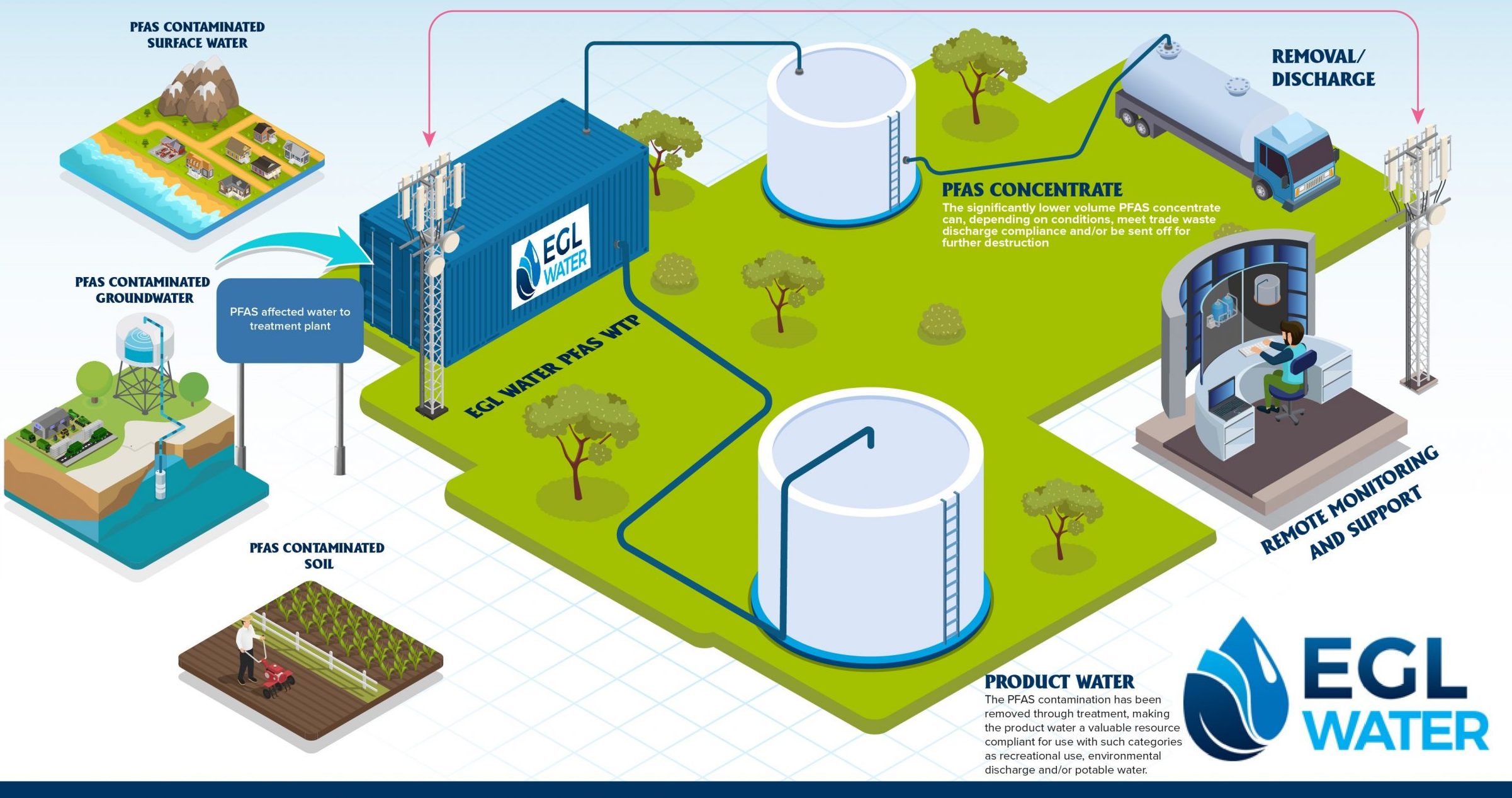The Importance of PFAS Treatment in Cleaning Contaminated Water
Wiki Article
Ingenious PFAS Therapy Solutions for Safer Water
The boosting frequency of PFAS contamination in water supplies necessitates an important exam of innovative therapy options. In addition, arising bioremediation techniques provide an even more lasting strategy to taking on PFAS obstacles. pfas management.Overview of PFAS Contamination
PFAS contamination has become a considerable environmental and public health and wellness issue. Per- and polyfluoroalkyl compounds (PFAS) are a team of artificial chemicals understood for their determination in the atmosphere and body, leading them to be frequently described as "permanently chemicals." These compounds have been widely made use of in various sectors, including firefighting foams, water-repellent fabrics, and food product packaging, primarily as a result of their water- and grease-resistant residential properties.The extensive use of PFAS has resulted in their discovery in dirt, water materials, and even in the blood of humans and pets. Researches have actually linked PFAS exposure to numerous wellness concerns, consisting of developing results in infants, immune system dysfunction, and different forms of cancer cells. In addition, the ecological determination of these substances complicates their destruction and removal, raising problems concerning lasting environmental effects.
Regulatory bodies are significantly applying rigorous guidelines to monitor and lower PFAS levels in drinking water and various other environmental tools. As awareness of PFAS contamination expands, it has become imperative for areas and markets to look for efficient therapy services to mitigate exposure and safeguard public health and wellness.
Advanced Filtration Technologies
As the seriousness to address PFAS contamination heightens, advanced filtering modern technologies have become a pivotal element in the removal efforts targeted at removing these consistent chemicals from water resources. These technologies leverage innovative mechanisms to efficiently target and record PFAS compounds, which are notoriously immune to standard treatment techniques.Among one of the most promising methods is making use of granular activated carbon (GAC), which adsorbs PFAS molecules because of its high area and porous structure. This technique has actually been extensively implemented in both community and commercial setups, showing considerable decreases in PFAS focus. Furthermore, ion exchange materials have actually gained grip, especially created to precisely bind PFAS ions from water, thus promoting their removal.
Membrane layer filtering technologies, such as reverse osmosis and nanofiltration, additionally reveal efficacy in PFAS removal by physically separating contaminants from water - pfas management. These systems can achieve high levels of purity, making them suitable for drinking water applications
Chemical Treatment Developments
Countless chemical therapy innovations are being explored to properly address PFAS contamination in water supplies. One promising method involves making use of advanced oxidation processes (AOPs), which make use of effective oxidants such as ozone, hydrogen peroxide, or chlorine dioxide incorporated with UV light to damage down PFAS compounds into less harmful substances. This approach has actually demonstrated effectiveness in laboratory settings, showing potential for scalability in real-world applications.Another cutting-edge method is the advancement of ion-exchange resins especially made to target PFAS. These resins can selectively adsorb PFAS substances from water, enabling their removal during treatment processes. Current improvements have boosted the effectiveness and capacity of these materials, making them a desirable choice for water treatment centers.
Furthermore, scientists are investigating making use of chemical agents like persulfate and ferrous ions to enhance the destruction of PFAS in contaminated water. These representatives can induce chemical reactions that facilitate the failure of consistent PFAS substances.
Emerging Bioremediation Techniques
Current advancements in chemical treatment innovations have actually led the way for exploring bioremediation strategies as a pfas management practical choice for dealing with PFAS contamination. Bioremediation harnesses the natural metabolic procedures of bacteria to weaken or transform toxins, making it an appealing method for tackling persistent pollutants like PFAS.
Emerging methods in bioremediation include making use of genetically crafted microbes that can especially target and damage down PFAS substances. These microbial pressures are being created for their boosted degradation abilities, boosting the performance of the remediation process. Furthermore, scientists are investigating the capacity of plant-assisted bioremediation, where specific plant varieties might uptake and sequester PFAS from contaminated soil and water.
One more encouraging approach is the application of bioaugmentation, which includes presenting beneficial bacteria right into infected atmospheres to enhance the degradation of PFAS. This method can assist in quicker removal timelines and boost total effectiveness.

Regulatory Frameworks and Standards
A thorough governing structure is crucial for efficiently managing PFAS contamination and making sure public health and wellness protection. The raising acknowledgment of per- and polyfluoroalkyl compounds (PFAS) as toxic wastes has actually prompted various government and state companies to establish requirements that govern their visibility in water materials. The United State Epa (EPA) has actually established health advisories and is pursuing establishing enforceable limitations for PFAS in drinking water.State-level regulations differ significantly, with some states taking on more stringent guidelines than those proposed by the EPA. These laws often consist of optimum pollutant levels (MCLs) for details PFAS substances, tracking requirements, and reporting commitments for water energies. In addition, emerging frameworks concentrate on the remediation of contaminated websites, highlighting the need for reliable treatment technologies.

Verdict
In verdict, the advancement and application of innovative PFAS therapy services are important for addressing the prevalent problem of water contamination. Advanced filtration modern technologies, chemical therapies, and emerging bioremediation strategies collectively offer a diverse method to effectively minimize and deteriorate PFAS degrees. As regulative frameworks proceed to develop, incorporating these innovations will certainly be necessary to secure public health and recover the stability of infected water sources, inevitably contributing to a cleaner and more secure environment.Report this wiki page